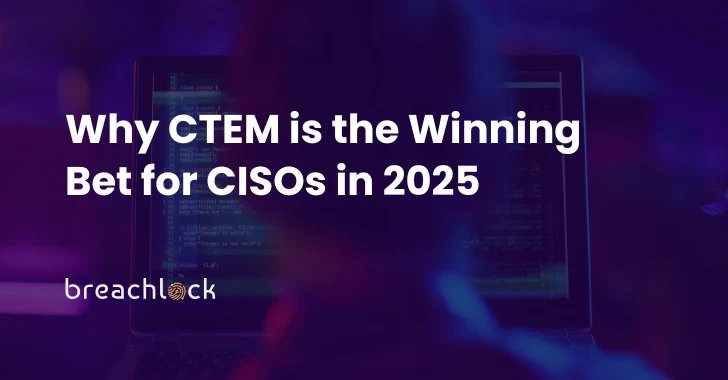Top Highlights
-
CTEM’s Strategic Role: Continuous Threat Exposure Management (CTEM) has evolved into a critical element for CISOs, transitioning from a theoretical concept to a key strategy that aligns cybersecurity efforts with real-world business risks.
-
Integrated Tools for Risk Management: At the core of CTEM are Adversarial Exposure Validation (AEV) tools, including Attack Surface Management (ASM), autonomous penetration testing, and Breach and Attack Simulation (BAS), which empower enterprises to proactively identify, validate, and respond to threats.
-
Transformative Outcomes: Early adopters of CTEM report significant improvements in risk visibility, faster validation processes, and better alignment of cybersecurity investments with business goals, demonstrating its effectiveness in addressing the growing complexities of cyber threats.
- Future-proofing Cybersecurity: The continuous and proactive nature of CTEM is essential for managing the expanding digital attack surface, meeting regulatory compliance demands, and evolving security needs, making it a crucial strategy for businesses in the modern cyber landscape.
The Issue
In the rapidly evolving landscape of cybersecurity, Continuous Threat Exposure Management (CTEM) has emerged as a vital framework for Chief Information Security Officers (CISOs). This strategic shift arises from the need to align cybersecurity initiatives with tangible business outcomes amid increasing cyber risks and regulatory pressures. By integrating methodologies like Adversarial Exposure Validation (AEV), External Attack Surface Management (ASM), and Breach and Attack Simulation (BAS), CTEM enables organizations to engage in a continuous process of validating their security measures, identifying vulnerabilities in real-time, and adjusting their defenses accordingly. The profound significance of CTEM is underscored by Gartner’s prediction that organizations adopting this approach will be three times less likely to experience breaches by 2026.
The reporting on CTEM’s ascendance highlights how enterprises are not merely adopting it as an abstract concept but are actively leveraging it to transform security into a proactive, data-driven discipline. As stakeholders within organizations increasingly expect measurable outcomes, CISOs who adopt CTEM report heightened visibility into risk management, more efficient remediation cycles, and enhanced alignment with business priorities. Companies such as BreachLock are at the forefront of this movement, providing essential tools that facilitate continuous security testing and validation, ultimately reshaping the conversation around cybersecurity from mere compliance to a holistic, integrated strategy aimed at achieving operational resilience.
Risks Involved
The adoption of Continuous Threat Exposure Management (CTEM) represents a critical advancement in cybersecurity, yet its implementation carries significant risks for other businesses, users, and organizations, especially if they are not aligned with this proactive framework. Should a breach occur within an organization that fails to utilize CTEM practices, the cascading effects extend far beyond immediate financial losses; they compromise the integrity of supply chains, jeopardize user trust, and invite regulatory scrutiny. As interconnected systems proliferate, a single vulnerability can serve as a gateway for cybercriminals, exposing sensitive data and operational capabilities across multiple organizations. Consequently, those lacking the foresight to engage in continuous adversarial exposure validation may find themselves not only facing severe reputational damage and operational disruptions but also potentially incurring legal liabilities as stakeholders demand accountability. In a landscape where cyber risk is irrevocably entwined with business viability, the ramifications of neglecting a CTEM approach could culminate in a systemic breakdown, thereby underscoring the imperative for collective vigilance and standardization in cybersecurity practices.
Possible Actions
In an ever-evolving cyber landscape, the significance of timely remediation cannot be overstated.
Mitigation Steps
- Risk Assessment: Conduct thorough evaluations to identify vulnerabilities.
- Incident Response Plan: Develop and regularly update a comprehensive incident response framework.
- Automated Monitoring: Implement real-time monitoring systems for early threat detection.
- Employee Training: Regularly educate staff on recognizing and responding to cyber threats.
- Patch Management: Ensure prompt application of security patches to all software and systems.
- Access Controls: Enforce strict access policies to minimize internal threats.
- Regular Testing: Perform periodic penetration tests and vulnerability assessments.
NIST CSF Guidance
The NIST Cybersecurity Framework emphasizes the need for proactive risk management and continuous improvement in security posture. For detailed remediation strategies, refer to NIST SP 800-61, which outlines the essentials of incident handling and response.
Advance Your Cyber Knowledge
Stay informed on the latest Threat Intelligence and Cyberattacks.
Understand foundational security frameworks via NIST CSF on Wikipedia.
Disclaimer: The information provided may not always be accurate or up to date. Please do your own research, as the cybersecurity landscape evolves rapidly. Intended for secondary references purposes only.
Cyberattacks-V1

